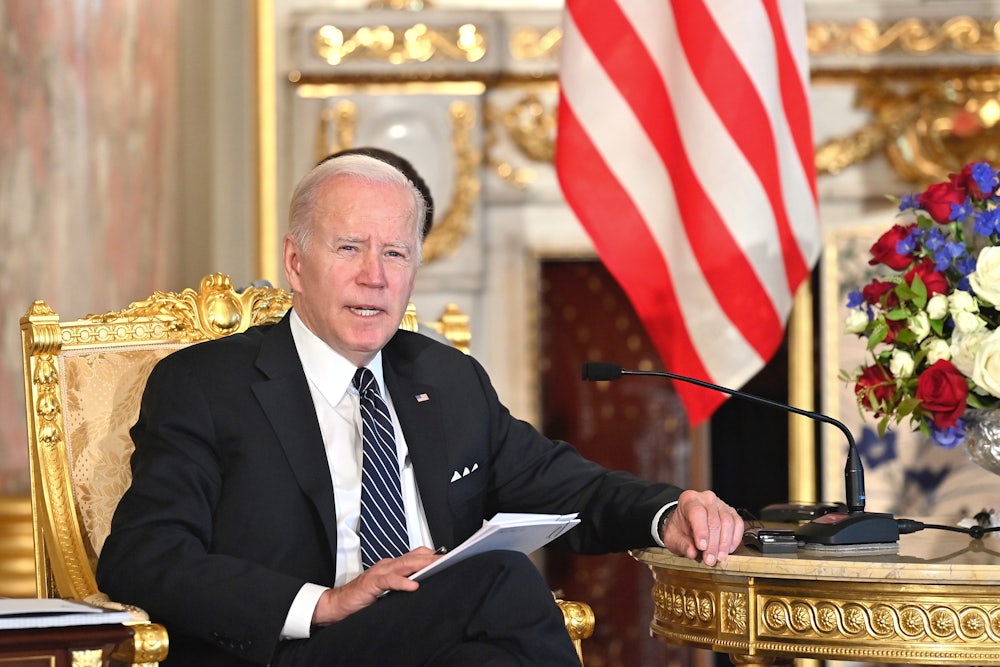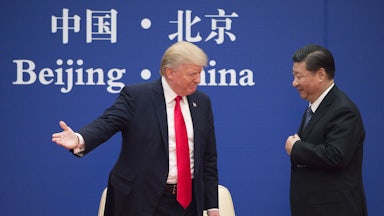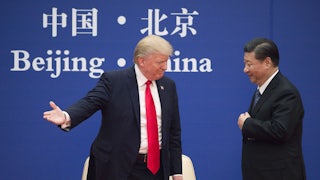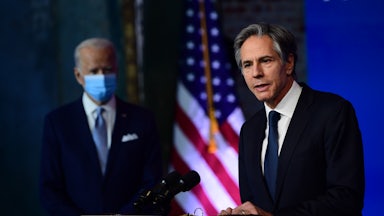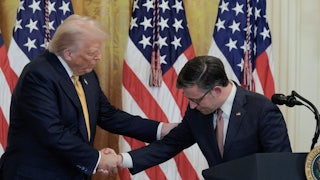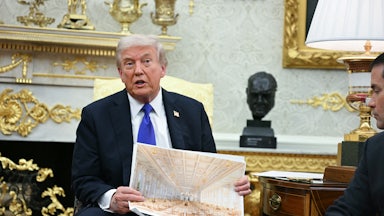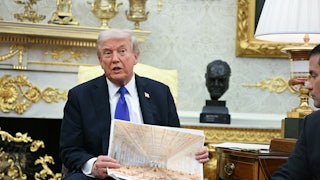There is an alternative universe in which Hillary Clinton won not only the popular vote but also an Electoral College majority and became, in January 2017, the forty-sixth president of the United States. The Supreme Court is majority Democratic for the first time in half a century, and Roe v. Wade will remain the law of the land. The Republican Party is as partisan as it ever was under President Barack Obama, but it isn’t trying to overturn elections. And the U.S. remains a signatory to the Trans-Pacific Strategic Economic Partnership Agreement, or TPP.
During the 2016 campaign, Clinton reversed herself on TPP. Although she’d previously promoted it, as Obama’s secretary of state and afterward, in October 2015 she said she opposed the deal. But trade experts didn’t expect Clinton would pull the U.S. out of TPP. Rather, they expected Clinton would renegotiate it to address various weaknesses. The alternative was to lose economic ground to China and the Regional Comprehensive Economic Partnership, or RCEP, that it was trying to create with 15 other nations in Southeast Asia.
We don’t live in that universe. We live in a more hellish one, where Donald Trump became president in January 2017. Among the first things Trump did was pull the U.S. out of TPP, clearing the way for RCEP to be signed in November 2020, a week and a half after Trump lost reelection. Time called the China pact, which focused mostly on reducing tariffs among member nations, “a clear marker of both China’s power and waning American influence in the Asia-Pacific region.” To add insult to injury, China applied to join TPP (which, after the U.S. dropped out, adopted a new name that I won’t bother with here).
It was a bizarre outcome for a Russophile president supposedly bent on shifting U.S. military and economic strategy to counter the China threat. But nobody ever accused Trump of competence or consistency.
Now President Joe Biden is trying to pick up the jagged shards of TPP and see how much of it he can piece together to counterbalance RCEP. The answer, in the form of the new Indo-Pacific Economic Framework, or IPEF, appears to be “not much.” It follows that there’s not much in the pact to raise objections against. Participating countries will seek better coordination to prevent supply chain interruptions, more ambitious targets to reduce carbon emissions and transition to clean energy sources, and more transparency on financial transactions to curb tax evasion and money laundering. They will also work to establish “high-standard rules of the road in the digital economy” on matters such as censorship, privacy, and “discriminatory and unethical use of Artificial Intelligence.”
The IPEF is not a trade deal. Trade deals need to be approved by Congress, and there’s no chance the current Congress will approve any. “To be clear,” read a White House memo that leaked earlier this year to Bob Davis, a superb trade reporter who recently retired from The Wall Street Journal, “this initiative will not include new market access commitments. Instead, we are keen to explore how we might set regional trade rules and address regulatory issues.” IPEF, Davis explained in Politico Magazine, “won’t give Asian nations broader access to U.S. markets through tariff cuts or other concessions.” Consequently, it won’t likely prompt Asian nations to give the U.S. broader access to their markets through tariff cuts. The participation of India in IPEF, Davis told me, is a tip-off that the pact won’t press for trade concessions, since India is especially reluctant to alter any of its trade rules.
IPEF is most definitely intended to check China’s economic dominance in Southeast Asia, but the Biden administration is taking great pains not to say so. References to China and its RCEP are absent from a fact sheet the White House put out and from prepared remarks Biden and Secretary of State Antony Blinken delivered Monday in Tokyo. That’s because the dozen initial partners in IPEF are also members of RCEP, and the last thing they want is to get caught in any rhetorical crossfire between the U.S. and China. At a Tokyo protest this past weekend in advance of the announcement, organizer Shunkichi Takayama told Reuters, “Japan and the U.S. are trying to conduct a war of aggression on China.” Biden didn’t help matters by blurting out Monday—for the third time!—that the U.S. would defend Taiwan, which is not a signatory to IPEF, against attack from China. In a likely concession to IPEF’s more jittery signatories, even China will be eligible to join the pact.
Civil society groups have raised other objections: The IPEF will lock in trademark protections for overpriced medicines, protect tax exemptions for big digital platforms, speed privatization. A letter to the president sent last fall by the nonprofit Trade Justice Education Fund noted that agreements blandly labeled “e-commerce” or “digital trade” can mask dismantlement of antitrust policies, labor protections, consumer protections, and so on. “Requiring large ride-sharing companies, for instance, to meet driver hours-of-service rules,” the group wrote, “or to contribute to social security for drivers or requiring buildings of short stay guest units booked online to meet worker and consumer safety rules, must never be characterized as a ‘trade barrier.’”
It’s too early to assess how real these dangers might prove, even if IPEF serves as a bridge to a formal trade agreement a few years from now. But a trade negotiation conducted during, strangely, the Trump administration offers a favorable model for labor participation. When then–U.S. Trade Representative Robert Lighthizer was negotiating the United States-Mexico-Canada Agreement, or USMCA, the Trump administration’s replacement for the much-reviled North American Free Trade Agreement, Lighthizer sought input from labor—and got Mexico to agree to virtually everything it asked for. Lighthizer knew USMCA wasn’t going to clear a Democratic-controlled Congress without an endorsement from the AFL-CIO, and the odds of that happening were long; the AFL-CIO hadn’t endorsed a trade pact since 2001’s U.S.-Jordan Free Trade Agreement. And with the 2020 presidential election less than a year away, the AFL-CIO’s then president, the late Richard Trumka, was in no mood to side with Trump about anything. But when Lighthizer delivered (with a strong assist from Democratic Senator Sherrod Brown of Ohio and House Speaker Nancy Pelosi), Trumka endorsed USMCA. On Monday the United Steelworkers, which opposed TPP, said in a prepared statement:
The U.S. already is engaged in the Indo-Pacific through more than $1 trillion in investments, substantial trade flows and strategic partners. Workers don’t question this: They understand that America is stronger when we work with friends and allies.… Organized labor has and will continue to provide input and work with the administration to try and reach a successful IPEF. At the end of the day, our support will depend on the substance of any agreement and the results it provides to our workers.
What happened with USMCA can happen with a future trade agreement in Asia. Labor, environmental, and consumer protections will have to be substantial in any such deal. But the U.S. really can’t afford to hand the economies of the Indo-Pacific regions over to China. In combination with the U.S., these countries control 40 percent of the world’s gross domestic product. The TPP is dead in the U.S., but something will have to rise in its place to ensure America’s continued presence in the global economy. For the foreseeable future, that possibility is confined to an alternative universe. But Biden knows it will have to happen someday, and he just brought that day a wee bit closer.
